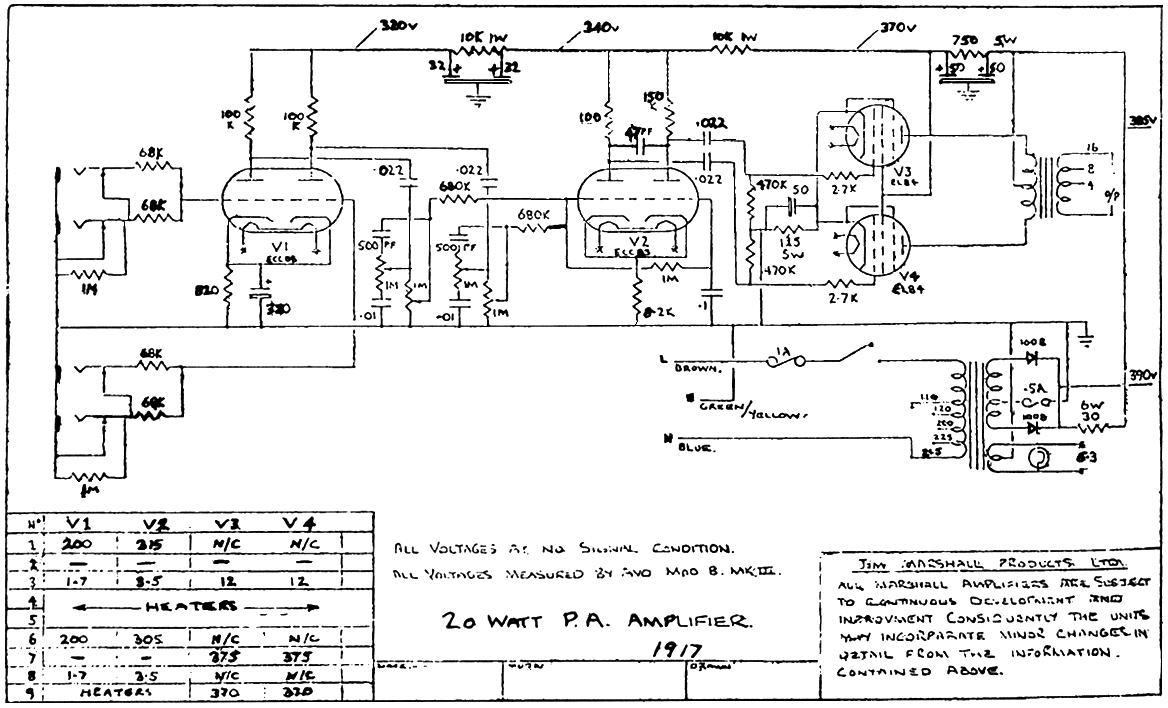In a recent thread, I asked about why guitar amp speakers never have a tweeter/woofer/sub + crossover system like a home Hi-Fi would have for listening to music/movies. I received a great deal of information that made a ton of sense, and thankfully really cleared up a years-long head scratcher for me. I really appreciate that input.
This thread is not about speakers... but rather about the difference between a guitar amplifier, and a voice amplifier i.e. a P.A. System. Now, obviously a P.A. would have a mixer, or at least a multi-input 'front-end' (or so I'm calling it". That in and of itself is obviously a huge difference. But once a mixer has done all it's business, it sends out an electrical signal (or signals, for stereo) and that signal(s) is sent through an amplifier.
For the sake of this question, let's get rid of the mixer all together, and say we have just a dynamic SM-58 microphone plugged straight into a PA's amp. Within that amplifier, I imagine there must be some form of "pre-amp" to get the weak signal up to a level that can be amplified, and then the output transformer pushes the pre-amp'ed signal up to whatever level it is designed to... and out the speakers.
As I type this... I think I am starting to see that a major hole in my knowledge is around what a "Pre-amp" in a guitar amplifier really is for. In a simple amp like a Champ, that has no tone control, no reverb... nothing... just a volume pot, and that's really it. So... what DOES a pre-amp really do? I imagine that once I know that, I will probably be able to understand where a guitar amp and a PA differ.
This thread is not about speakers... but rather about the difference between a guitar amplifier, and a voice amplifier i.e. a P.A. System. Now, obviously a P.A. would have a mixer, or at least a multi-input 'front-end' (or so I'm calling it". That in and of itself is obviously a huge difference. But once a mixer has done all it's business, it sends out an electrical signal (or signals, for stereo) and that signal(s) is sent through an amplifier.
For the sake of this question, let's get rid of the mixer all together, and say we have just a dynamic SM-58 microphone plugged straight into a PA's amp. Within that amplifier, I imagine there must be some form of "pre-amp" to get the weak signal up to a level that can be amplified, and then the output transformer pushes the pre-amp'ed signal up to whatever level it is designed to... and out the speakers.
As I type this... I think I am starting to see that a major hole in my knowledge is around what a "Pre-amp" in a guitar amplifier really is for. In a simple amp like a Champ, that has no tone control, no reverb... nothing... just a volume pot, and that's really it. So... what DOES a pre-amp really do? I imagine that once I know that, I will probably be able to understand where a guitar amp and a PA differ.
 or check Marshall PA amplifiers
or check Marshall PA amplifiers
Comment